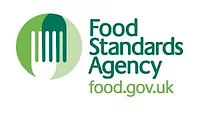Comparison of Beef and Pork Slaughterhouses Find Better Food Safety Controls in Large-Scale, Beef Facilities

A recent study published in Food Control evaluated and compared the level of conformity with food safety requirements in cattle and pig slaughterhouses. The study was conducted to address a knowledge gap regarding food safety assessments in the qualification procedures of suppliers of meat to processing plants. The study’s researchers hypothesized that there is a difference in the level of food safety conformity with audit requirements between type and size of slaughterhouse, and note that pig slaughterhouses can process an average of 10 times more animals than cattle slaughterhouses. The study’s findings were consistent with the researchers’ hypothesis, as cattle slaughterhouses were significantly more adherent to food safety requirements than pig slaughterhouses.
Slaughterhouses supplying beef and pork to a large-scale meat processing plant were audited in their qualification procedures. The study states that qualification procedures can be considered as a food safety risk management tool, since supplier qualification is necessary to eliminate suppliers that do not meet food safety criteria. Supplier qualification can be performed when raw meat is admitted to a processing plant, either by supplier self-assessment or, most effectively, as an internal audit of slaughterhouses by third-party auditors.
According to the study’s researchers, the safety of meat products depends on raw meat quality, production process, packaging, storage conditions, and personal hygiene of operational staff. The prevention of microbiological contamination of meat and cross-contamination hinges on the quality of and adherence to standardized slaughter and cutting operating procedures. It is important to establish and apply criteria for evaluating, selecting, monitoring, and reassessing meat suppliers’ food safety management systems (FSMS).
The study’s researchers note that, when evaluating slaughterhouse FSMS, adherence to Hazard Analysis and Critical Control Points (HACCP) practices, food law requirements, and good hygiene practices (GHPs) should be considered. Since the study’s audits took place in 2019–2020, at the height of the COVID-19 pandemic, the prevention of spreading COVID-19 through good personal hygiene of staff was also considered.
In total, 72 slaughterhouses—36 pig and 36 cattle—were audited. The slaughterhouses, which are located in Poland, the Netherlands, Germany, and Denmark, supply beef and pork to one of the largest meat processing plants in Poland. A majority (69 percent) of the audited slaughterhouses were medium-sized, processing an average of 1,000 animals per week, and the remainder (31 percent) were large-scale, processing 1,000–5,000 animals per day. Of the beef slaughterhouses, 33 percent were large-scale enterprises and 67 percent were medium-sized, whereas for pork slaughterhouses, 28 percent were large-scale and 72 percent were medium-sized.
The study’s audits of supplier qualification processes were based on ISO 19011 guidelines and the plant’s own internal audit procedure. The audits sought to determine the level of compliance with food safety requirements, traceability, and COVID-19 prevention. The audits included six basic and six critical criteria. Basic criteria included: 1) hygienic design of facilities, 2) equipment, 3) hygiene of operational staff, 4) training of operational staff, 5) site hygiene in slaughterhouses, and 6) pest control. Critical criteria included: 1) control of slaughtering and cutting processes, 2) storage conditions, 3) HACCP controls, 4) control of non-conformities of meat quality, 5) traceability, and 6) COVID-19 prevention measures.
The study found that, as a result of the audit, 82 percent of slaughterhouses were deemed qualified suppliers, 8 percent were deemed backup suppliers, and 10 percent were disqualified from being suppliers. There were approximately two-and-a-half times more disqualified pork suppliers than beef suppliers. On average, slaughterhouses supplying beef received higher qualification scores than pork slaughterhouses, but slaughterhouse size also had a significant influence on qualification scores. In general, large-scale slaughterhouses scored much better than medium-sized slaughterhouses, regardless of whether they specialized in beef or pork.
Looking for quick answers on food safety topics?
Try Ask FSM, our new smart AI search tool.
Ask FSM →
Several criteria, both basic and critical, were identified as requiring urgent improvement in cattle and pig slaughterhouses. The criteria are:
- Site hygiene
- Pest control
- HACCP controls
- Non-conformity controls.
The study also found that not all criteria were fulfilled equally by beef and pork slaughterhouses, with beef slaughterhouses showing significantly more complete fulfillment of site hygiene, pest control, and storage conditions. The study’s researchers note than this disparity could be due in part to the number of animals slaughtered at the different types of slaughterhouses; daily capacity of slaughtering pigs is, on average, 10 times higher for cattle, which increases the amount of fecal contamination in pork plants and, therefore, increases the challenge of maintaining proper hygiene levels.
However, cattle and pig slaughterhouses showed a similar level of conformity related to hygienic design of facilities, equipment, staff hygiene and training, production process control, HACCP control, non-conformity control, traceability, and COVID-19 control. The conformity scores were high for COVID-19 control, equipment, staff hygiene and training, and hygienic design of facilities, with the score for COVID-19 control being the highest in both cattle and pig slaughterhouses.









